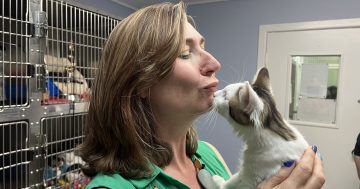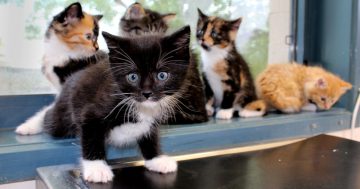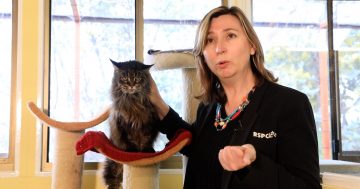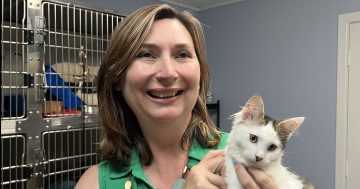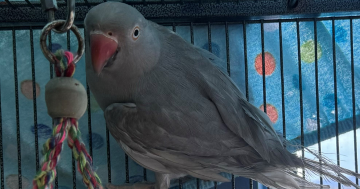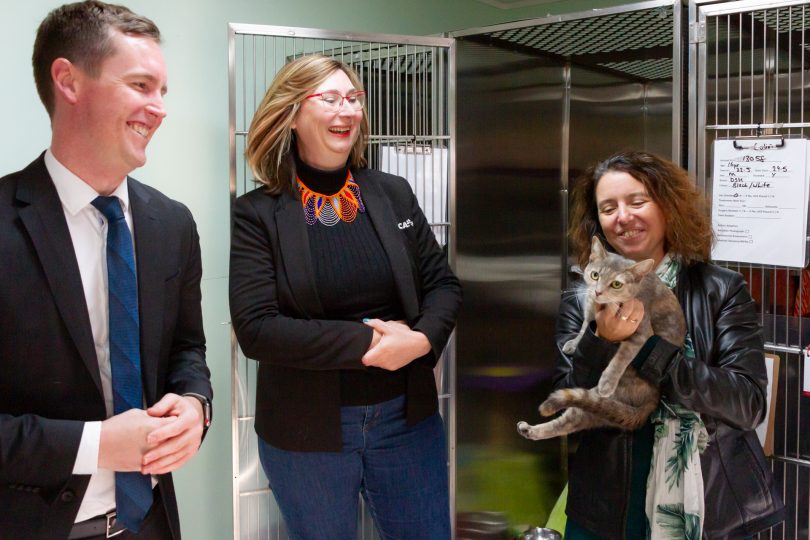
Transport and City Services Minister Chris Steel, RSPCA ACT CEO Michelle Roberston and Environment Minister Rebecca Vassarotti with Venus the cat at the RSPCA headquarters in Weston. Photo: Michael Weaver.
Cat owners will have to register their cats and cat containment will be introduced in all Canberra suburbs as part of a 10-year plan to provide a lifeline to native wildlife and encourage more responsible ownership of felines in the capital.
Transport and City Services Minister Chris Steel said the plan also gives cats an extra lease on life after consultation on the ACT Cat Plan revealed the catastrophic injuries and illnesses cats suffer when they roam free.
Eight strategies will be rolled out over the next 10 years to encourage cat owners to be more responsible, prioritising cat registration and cat containment in all Canberra suburbs from 1 July 2022.
Cat owners will be required to pay a one-off $57 fee when they first register a newly acquired cat and they will then need to update their details annually at no cost. There will be no charge for existing cat owners to register their current cat. Cats will also have to be microchipped in the same way dogs are.
Cats owned before 1 July 2022 are exempt from compulsory containment if their owners do not already live in a cat containment suburb.
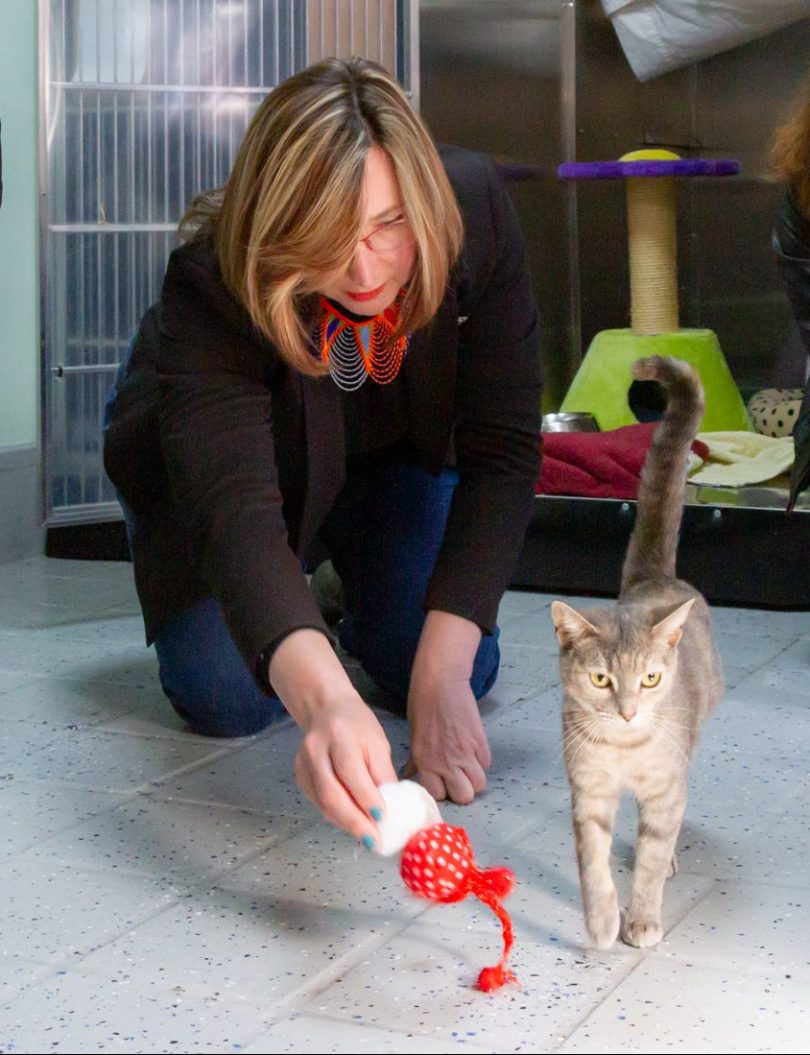
RSPCA ACT CEO Michelle Roberston and Venus at the RSPCA headquarters in Weston. Photo: Michael Weaver.
RSPCA ACT CEO Michelle Roberston said the stats on cats that stray from their confines are confronting. The RSPCA took in more than 45,000 cats across Australia last financial year.
“In the ACT, we took in just over 3000 animals and 1465 of them were cats,” Ms Robertson said.
“Of those cats, nearly 68 per cent were stray, which are unowned cats just walking around. Of those stray cats, 80 per cent weren’t microchipped, while 65 per cent weren’t desexed.
“Microchipping, desexing and cat containment are real issues that we see in the shelter here, and we’re very glad these issues are being addressed in the ACT Cat Plan.”
RSPCA veterinarian Dr Eloise Bright is the owner of two cats. One lost an eye and another lost a leg after accidents while roaming free.
“They are now kept inside to protect their remaining body parts,” she said, adding cat containment does not prevent cats from using their instincts to hunt.
“You can make sure they are happy inside by putting their food into balls where they have to hunt for it indoors, which satisfies that natural instinct.
“It’s amazing how cats can adapt to living in suburban homes, and many people are unaware of how far their cats go at night. Studies using GPS trackers on cats have found they’ve roamed up to 200 hectares in one night.”

Street cats at Fyshwick. Photo: Canberra Street Cat Alliance.
Environment Minister Rebecca Vassarotti said Canberra’s free-roaming but owned cats are estimated to prey on 61,000 native birds, 2,000 native mammals, 30,000 native reptiles and 6,000 native frogs each year.
Mr Steel said the plan involved significant consultation with cat owners, environmental groups and the broader community over many years.
“It recognises how important the wellbeing of pet cats is to their owners while acknowledging the responsibility we all share to protect Canberra’s native animals and environment,” Mr Steel said.
“Outside of declared suburbs, cat containment will only apply to new cats because we understand that existing cats and their owners may not be prepared or used to containment. The grandfathering approach strikes the right balance and allows a fair and gradual transition.”
ACT Conservation Council executive director Helen Oakey welcomed the plan but said it fell short in providing better protection for native wildlife and may cause confusion as to which cats would be subject to containment.
“For too many years, we have known about the havoc that roaming cats play as a result of hunting native animals in Canberra’s precious nature reserves,” Ms Oakey said.
“Sadly, it will also mean that the impact of cats on native animals is likely to continue for more than a decade as already-owned cats age. Setting a date by which all cats across Canberra should be contained would have been preferable.”
ACT Domestic Animal Services rangers will also provide advice and warnings to pet owners found roaming.
Penalties will be introduced as part of the forthcoming legislation and are anticipated to reflect current fines for breaches of animal management laws. The maximum penalty for a breach of cat containment is 10 penalty units or $1600.
You can read the ACT Cat Plan 2021–31 and the community consultation report on the ACT Government’s YourSay website.












